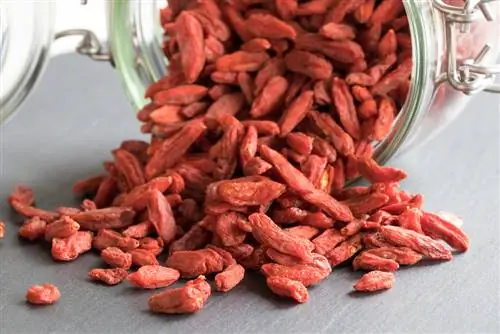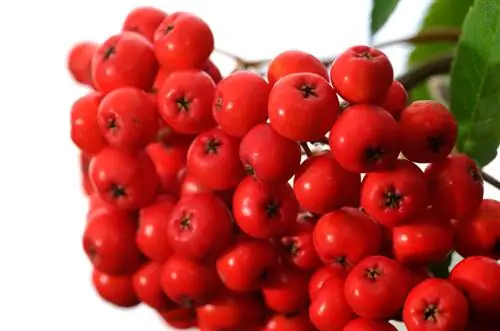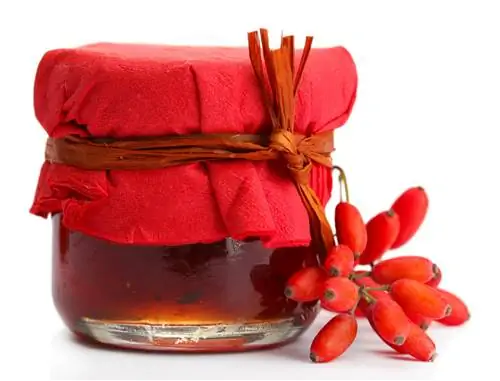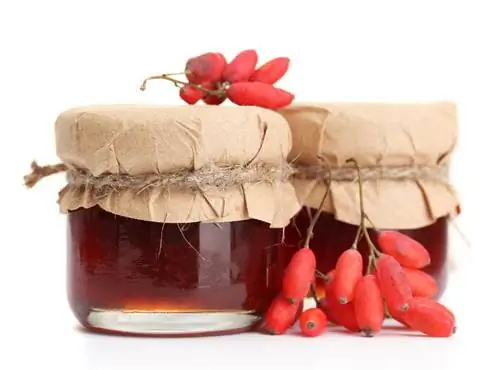- Author admin [email protected].
- Public 2023-12-16 16:46.
- Last modified 2025-01-23 11:21.
Goji berries are now no longer only available in stores in dried form and imported from the Far East, but also partly as fresh products directly from German cultivation. In many gardens in this country, the so-called buckthorn bush also produces harvest quantities that exceed the requirements for fresh consumption.
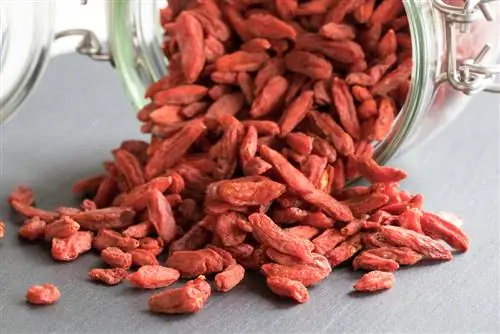
How can I process goji berries after harvesting?
Goji berries can be preserved after harvesting by extracting juice, freezing, drying or boiling into jams. Sweeter fruits or sugar should be added to balance the slightly bitter taste.
Process goji berries as quickly as possible after harvesting
Many fruit lovers know the problem: Fresh fruits are lying on the counter in the kitchen or in the refrigerator and soon no longer look really appetizing. It is usually only at this moment that you ask yourself whether you can somehow save the fruit from the compost heap and preserve and use it sensibly. Even though there may be one or two options in this regard, in general, goji berries, like other fruits, should either be consumed as quickly as possible or processed directly and preserved accordingly. This is the only way to maintain the high quality, including the vitamins and other valuable ingredients, in the best possible way. However, goji berries, for example, are less sensitive than raspberries when it comes to storing them for a few days after harvest before further processing.
Different ways to preserve goji berries
Goji berries can be processed and preserved in different ways:
- by extracting juice from the berries
- in frozen state
- by drying
- by cooking into jam
Juice made from goji berries lasts a little longer in the refrigerator than a bowl of fresh berries. However, if it is heated for preservation purposes, there is also a loss of valuable ingredients. When making juices and jams, sweeter types of fruit or sugar should be added, as the goji berries themselves are not exactly known for their sweet taste.
Freeze and dry goji berries properly
To dry goji berries, the green stem is removed and the berries are placed in the sun on absorbent kitchen paper. The berries should be turned every few hours so that they can dry evenly. Alternatively, goji berries can also be dried in an oven at a maximum temperature of 40 degrees Celsius, although the oven door should remain slightly open to allow the moisture to escape. To prevent goji berries from clumping together into a large, inseparable mass when freezing, you should first let the berries freeze in a single layer on a tray. Sometimes it can also be helpful to leave the green stems on the berries for storage in the freezer.
Tip
If you cannot immediately process your goji berries from the garden due to time constraints, it is sometimes better to leave them hanging on the bush. In general, most berries spoil more quickly after harvest than when they can still fully ripen on the branches of the berry bush.

